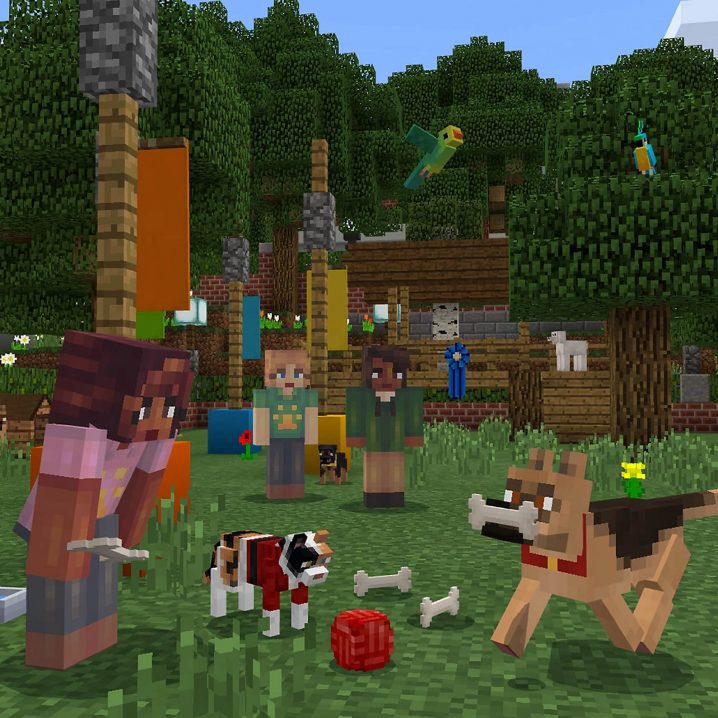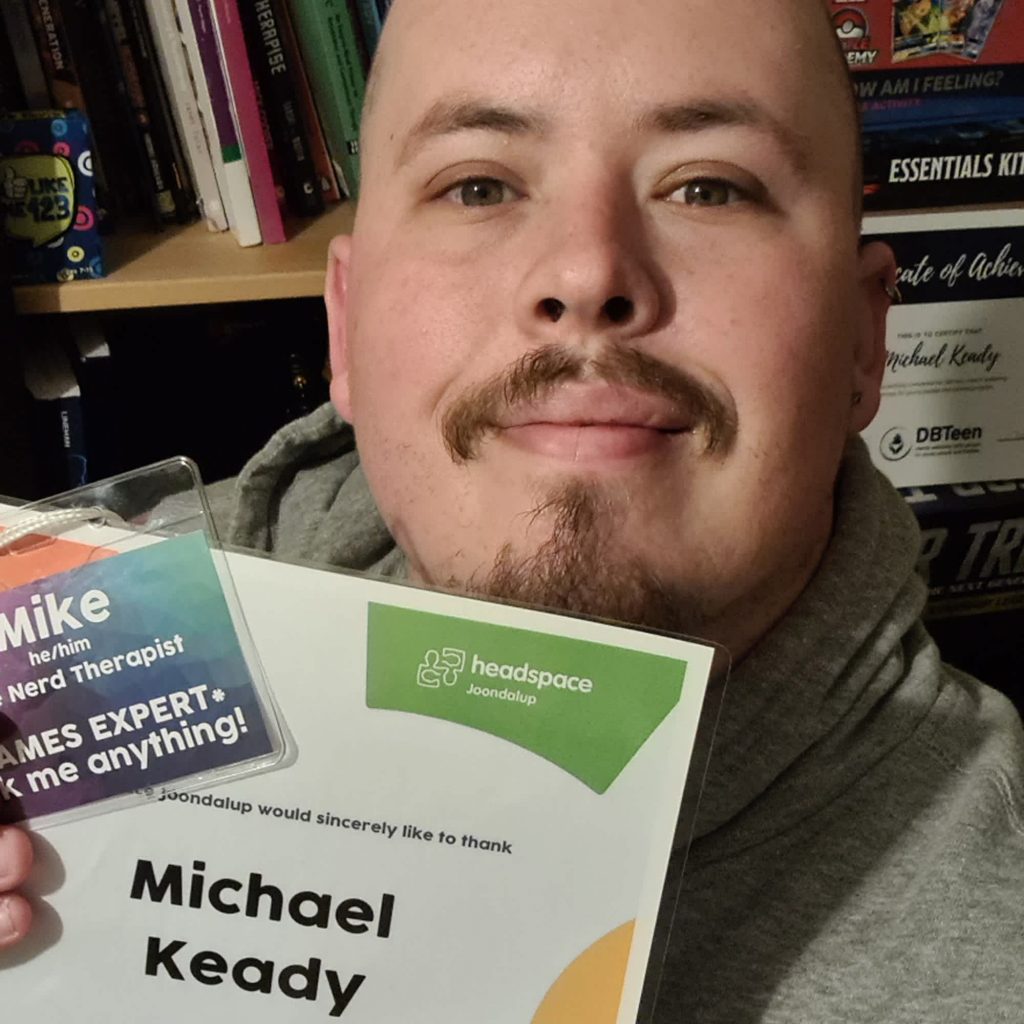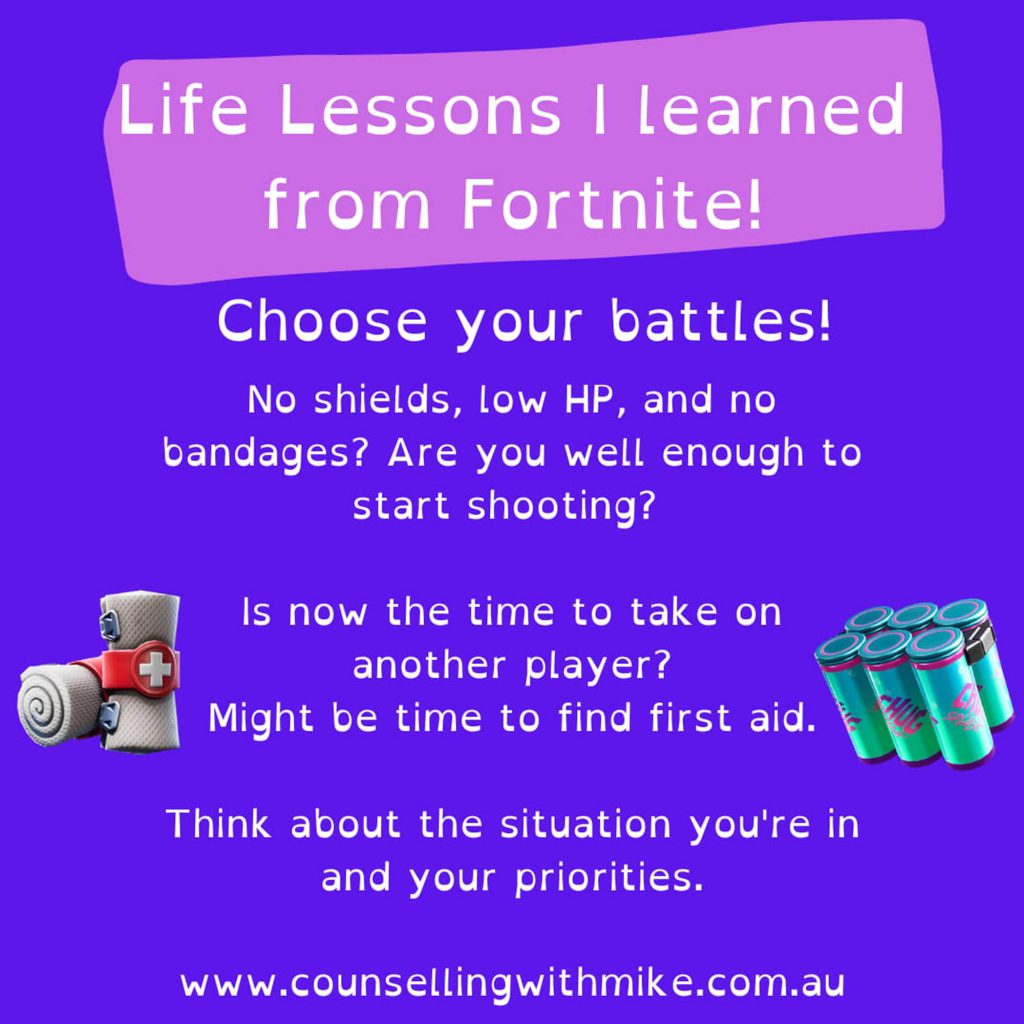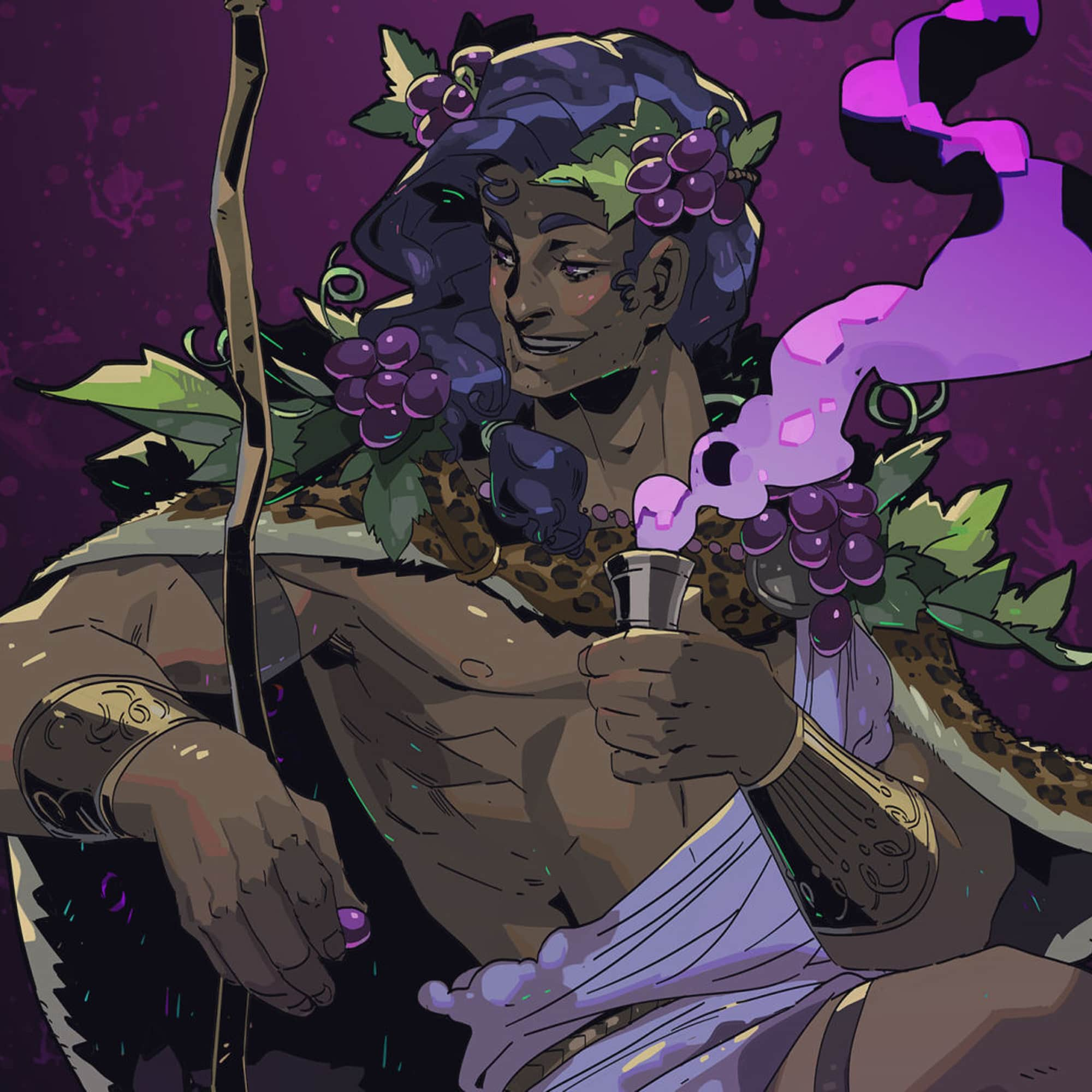
- POPSUGAR Australia
- Gaming
- Can Gaming Help You Level Up Your Mental Health? This Therapist Says Yes
Can Gaming Help You Level Up Your Mental Health? This Therapist Says Yes

Michael Keady, who calls himself the ‘Nerd Therapist‘, has been incorporating video games into his sessions for the past two years.
“Sometimes the game is for therapy, especially in the case of say Minecraft where we can do specific activities within the game to support the therapeutic conversation,” he tells POPSUGAR.

“And sometimes the game is there especially for people who are autistic or (have) ADHD; they need something to be doing, they need to be engaged in their sensory experience and… intellectually.”
“We play games to give them something to do because those one-on-one, standard therapy conversations can be really awkward.”
Minecraft, a game that allows players to build and create entire 3D worlds, is the game Keady uses most often with clients.
“It’s got the most resources built into it, it’s got the most popularity… it’s accessible, it mostly supports online play and there’s a lot of stuff you can do,” he says.

Other games he uses are Roblox, Civilization VI, Fortnite and Fall Guys.
“I go by what’s available… one of the guiding parts of the ethos is do what’s available and I try not to cost people any money more than they have to pay, so making people buy games is kind of against what I try to do,” Keady says.
Each therapy session is different depending on the individual, but a typical session will have Keady logging in and meeting his client in the game.
“We meet in the world and we also meet on Zoom so we can chat… and then we’ll go from there.”
What happens after that is not much different to a traditional therapy session, according to Keady.
“This isn’t about creating a new type of therapy; this is about doing the traditional therapy in the video game.”
He often uses the game as a starting point to talk about difficult issues or to help his clients manage complex emotions. If a patient struggles with frustration, for instance, dealing with creepers in Minecraft can help.
“Creepers are going to blow up your house,” he explains. “They do it sometimes with very little warning, so I say ‘okay, what do we need to do right now, because we can’t just sit here yelling at the computer screen because that’s not going to achieve anything’.”
“Then I bring it back and say ‘okay, that was kind of frustrating but what are some things that frustrate you in life?’ and have a conversation about frustrating stuff.”
Similarly, battle royale games like Fortnite are good at helping people look at different ways of winning.
“There’s one winner out of 100 people and this is a game where you’re definitely not always going to win,” Keady says. “You’re going to have to manage either being a good loser… or finding ways of winning.”
This can be anything from getting fewer eliminations in a round to making it to the top 20 or 10 players. It’s about “reframing different models for victory and achievement,” and it’s so effective that Keady is currently writing a book about life lessons learned from Fortnite.
Meanwhile, some video games have been designed specifically for a mental illness, such as the mobile game Project: EVO, which helps manage depressive symptoms, and MindLight, which is used to help treat anxiety disorders. The game EndeavorRx can even be prescribed to help treat ADHD.
Keady is looking to explore these further and currently has Max, an Autistic Journey on his to-play list — a turn-based RPG filled with mini-games that was developed by Stéphane Cantin hand-in-hand with his son, who was born with autism. The game puts players in the shoes of Max, a 10-year-old boy who must find ways to deal with everyday life while being diagnosed with an autism spectrum disorder.
Read more POPSUGAR gaming content below:
- Is ‘Tears of the Kingdom’ a Prequel to the First Ever Zelda Game? Lore Experts Think So
- “She’s a Top”: Anna Torv Answers All Our Questions About Tess In HBO’s ‘The Last of Us’
- 5 Games to Play Before Declaring ‘The Last of Us’ the GOAT
- Elden Ring Detectives Have Some Wild Theories About the DLC — Here Are the Best Ones
- Joel Finally Called Ellie “Baby Girl” In ‘The Last of Us’ and Fans Are Not Okay


